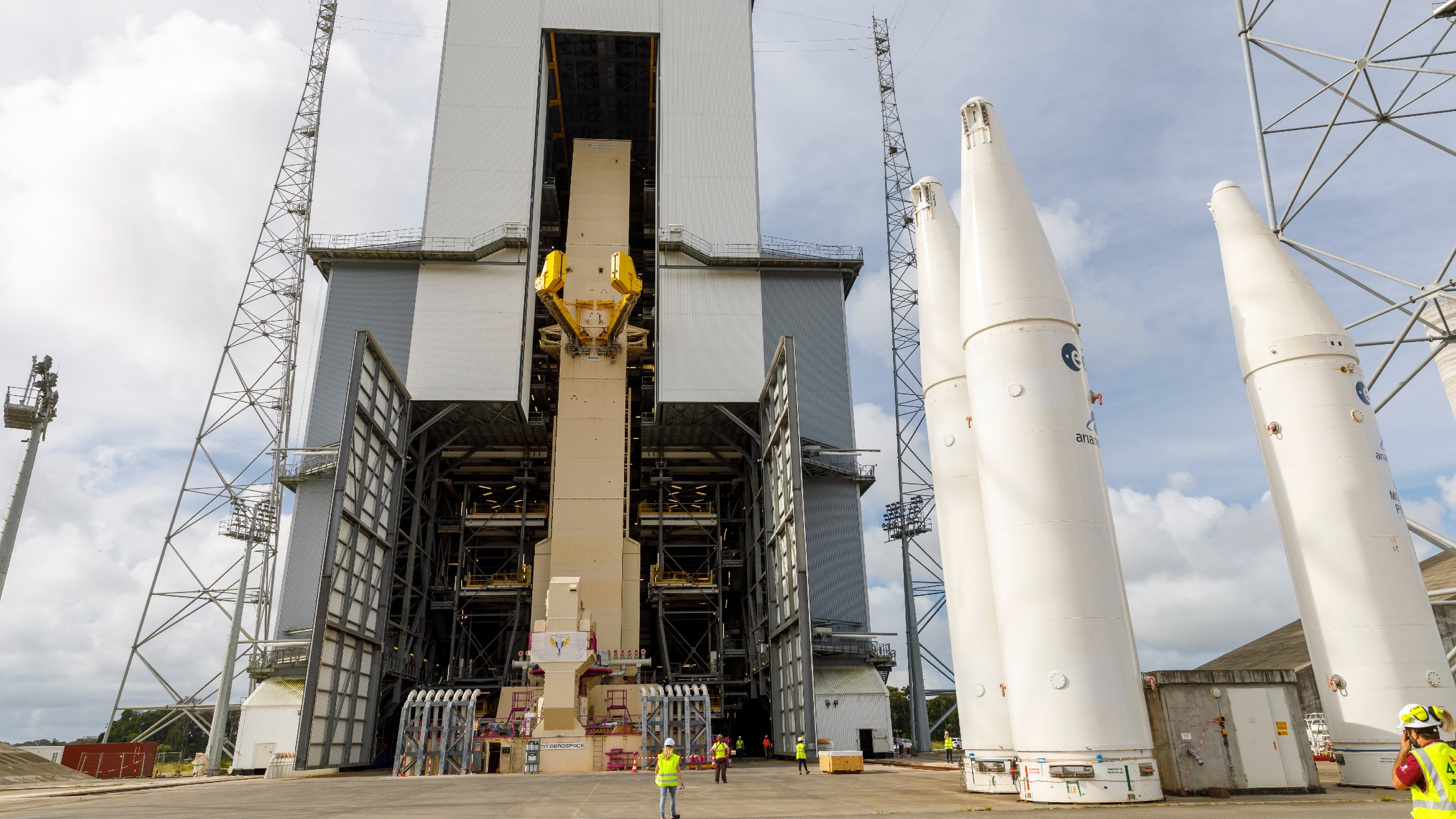What are spaceports?
From the early days of the cold war to modern commercial flights, spaceports are our gateway to the stars

The term spaceport probably conjures up images of Mos Eisley in Star Wars, or something altogether more pristine and pleasant in 24th Century San Francisco in Star Trek — but spaceports are actually a real thing.
Just like an airport is where you might catch an international flight to your favorite holiday destination, spaceports are ground-based facilities where space organizations — both national and now commercial — launch craft into space.
Whether it's satellites and rockets or the increasing number of flights being developed by the private sector, over the coming years it's the kind of thing we're likely to see more and more of.
Related: All aboard the Spaceship Neptune: Flying to the edge of space on a balloon
The evolution of spaceports
The very first spaceport was the Baikonur Cosmodrome in Kazakhstan, the launch place of the first ever satellite launch — Sputnik 1 in 1957 and Yuri Gagarin became the first man in space in 1961. British astronaut Tim Peake was also launched from Baikonur in December 2015.
With the development of commercial spaceflights such as Elon Musk's SpaceX and Sir Richard Branson's Virgin Galactic, spaceports are no longer just something being developed by governments but are increasingly becoming more open and commercial sites. They can be designed for both horizontal or vertical launches, crewed or uncrewed.
Where are the world's spaceports?

Spaceports are dotted all over the world in locations where you're most likely to find functioning private or state-run space programs. Since they were first developed, 28 spaceports have been used to launch satellites into orbit, with 22 still active today according to data compiled at the beginning of 2021 by the Centre for Strategic and International Studies (CSIS).
The location of some of the most well-known, are:
Kennedy Space Centre at Cape Canaveral (USA): Based in Florida, it's probably the world's best-known spaceport. Ever since the 1950s it's fronted some of the most famous missions and launches in history, such as the first US satellite — Explorer 1 — in 1958, and the Apollo 11 mission which took humans to the moon in 1969.
Rocket Lab Launch Complex One, New Zealand: Positioned in the southern hemisphere, it is privately operated and serves as a commercial launch site designed to send small rockets into space. This spaceport is owned and operated by private spaceflight company Rocket Lab and supports launches of its Electron rocket for CubeSat nanosatellites.
Guiana Space Centre, Kourou: The European Space Agency (ESA) operates its own spaceport in French Guiana. In 2014, the launch site successfully sent out the Sentinel-1A, which was an Earth observation satellite.
Satish Dhawan Space Centre, India: This spaceport was first opened in 1971 and holds the record for the most satellites launched every year.
Jiu Quan Satellite Launch Centre, China: Located in the Gobi Desert it is one of the four spaceports in China. It first came to the world's attention in 2003 when it made its first space launch. Other launches to take place there were the Hongyan-1 and the Six Yunhai-2 Satellites.
The next generation of spaceports
The demand for space flight driven by better technology and more commercial and private interest has added new impetus to the need for spaceports. The UK has pressed ahead with developing several spaceports as part of its strategy to increase its share of the global space economy to 10% by 2030.
Spaceport Cornwall received a license from the U.K. national regulator on Nov. 16, 2022. The converted airport in the southwest of England will host the first Virgin
Orbit launch from non-American soil.
Virgin Orbit is also developing a horizontal launch site at Oita airport in Japan, and last year it made an agreement with the Brazilian government to introduce launch capability to the Alcântara Launch Centre.
In 2021 Turkey also announced plans to invest $350m into a spaceport in Somalia as part of its $1 billion moon mission.
Additional information
For more information about spaceports and spaceflight check out, "Spaceport Earth: The Reinvention of Spaceflight" by Joe Pappalardo and "An Introduction to the Spaceport Industry" by Janet K. Tinoco, et al.
Bibliography
- UK Space Agency, "Size and Health of the UK Space Industry 2021", April 2022
- ESA, "Overview of Europe's Spaceport", accessed November 2022
- Thomas G. Roberts, "Spaceports of the World", Aerospace Security, September 2022
- NASA, "Exploration Ground Systems", accessed November 2022
- Tamela Maciel, "UK Spaceport", Space Centre, July 2018
- Erik Seedhouse, "Spaceports Around the World, A Global Growth Industry", Springer, 2017
Join our Space Forums to keep talking space on the latest missions, night sky and more! And if you have a news tip, correction or comment, let us know at: community@space.com.
Get the Space.com Newsletter
Breaking space news, the latest updates on rocket launches, skywatching events and more!

Mark Smith is a freelance journalist and writer in Liverpool, England. A graduate in Information Systems, he has written on business, technology and world affairs for organizations ranging from the BBC, The Guardian, The Telegraph and How It Works Magazine, as well as magazines and websites in the United States, Europe and South East Asia. Subjects of his writing have ranged from quantum computing to the VFX of Tron. He is the author of "The Entrepreneur's Guide to the Art of War," which Booklist called "Essential reading for the business leaders of tomorrow and a fascinating study of the boardroom as the new battlefield."










